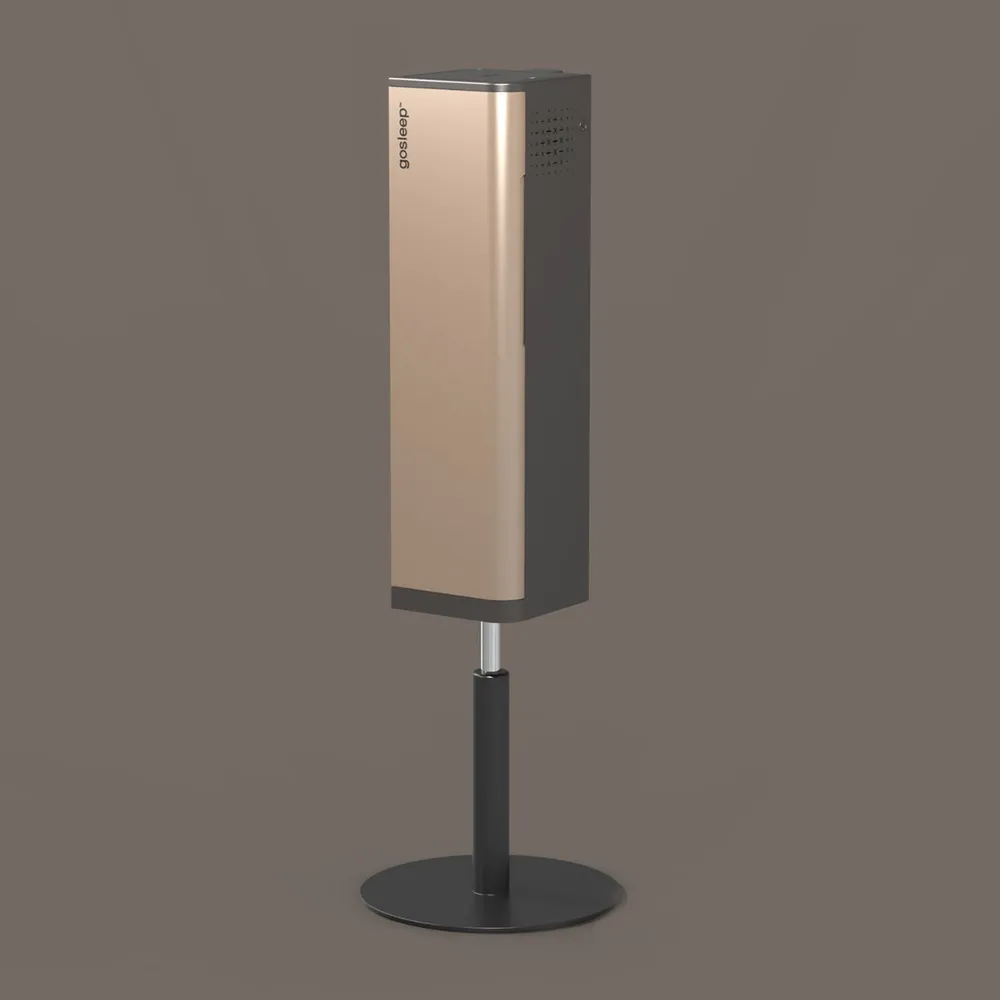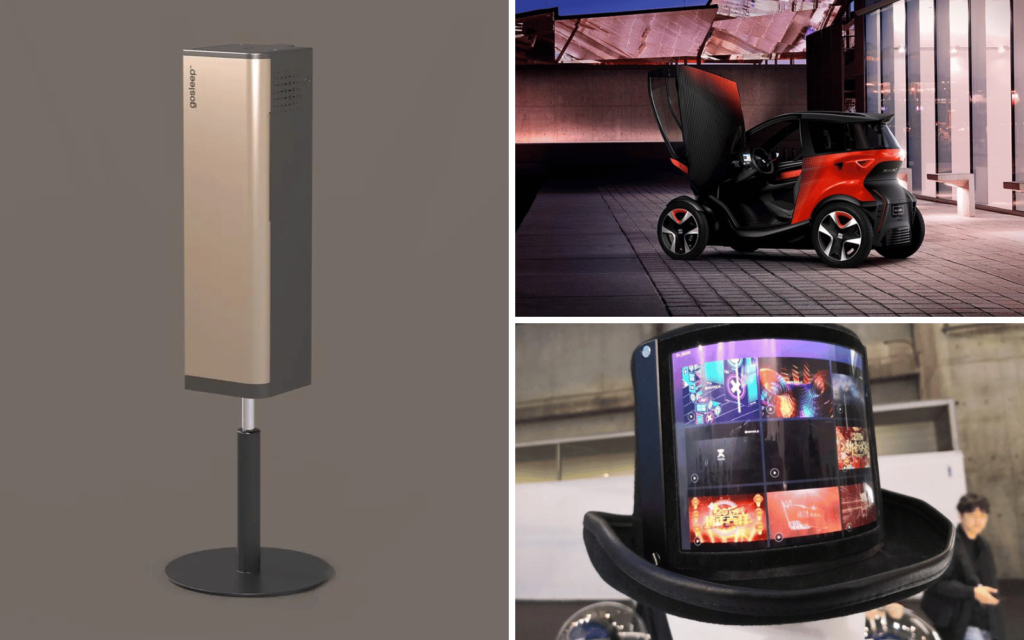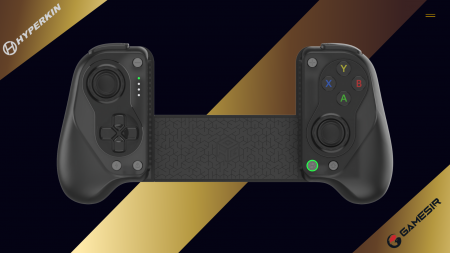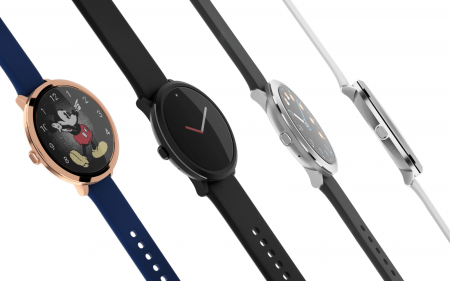After taking a break in 2020 (remember that pandemic?*), Mobile World Congress (MWC) has since returned to yearly events – and it’s no different in 2023. From 27 February until 2 March, the world’s largest mobile-focused trade show visits Barcelona again to show off the tech world’s best (and possibly weirdest) mobile innovations.
Despite being a mobile-focused show, attending brands don’t always waste limit their unveilings to mobile devices. Often, these devices forge into the territory of ‘strange’ and that’s what we’re looking at today. Better still, we’ll check up on how they’re getting along nowadays.
Energizer P18K Pop
Credits: 9to5Google
Heading up the ‘weird’ list is Energizer’s P18K Pop, a smartphone by name, a humongous battery by trade. Usually, one of the biggest factors when checking out a new phone is its battery life. 5,000mAh is, for the most part, good enough for the average user. Some devices kick it up a notch or two further and are praised for it.
Energizer is different. During MWC 2019, it unveiled the P18K Pop (don’t ask us if K-Pop is involved), a smartphone containing a – you guessed it – 18,000mAh battery. If watching videos for two days straight, and we mean straight, is something that appeals to you, the P18K Pop is your kinda phone. It’s thick (around 3 to 4cm), has a 6.2in IPS LCD display, 6GB of RAM, and 126GB of storage. There’s a MediaTek Helio P70 chip shoved in there too.
Unfortunately, even an 18,000mAh battery couldn’t save the P18K Pop. Soon after its MWC debut, it appeared on Indiegogo, offering devices for $550, an estimated shipping date of October 2019, and a $1.2 million goal in funding. It… did not reach those numbers. If you visit the campaign today, you’ll see that it reached less than 1% of its goal, with total donations sitting at R195,000 (of R21 million needed). We can’t say we’re sorry that it never reached shelves.
Husqvarna Smart Mower

Husqvarna used 2019’s MWC to announce its 435X AWD robotic mower. It had all the bells and whistles; AI, all-wheel drive, and the ability to connect to your smart home. Unlike Energizer’s device, the smart mower actually made it into people’s gardens and is still being sold by the company. The only issue was that it costs $4800 (roughly R850,000) to get it there. Oh, that price includes installation. Well, that makes it okay.
A deeper look into the 435X AWD’s features makes it a little easier to stomach the absurd price. For one, it drives itself. That alone makes us want one. Its ability to shirk off hills like they’re not even there also can’t be ignored. Personally, we don’t see a need for a mower that can tackle hills better, mainly because our gardens have no hills to speak of. Still, if you’re able to afford the 435X, you probably have some hills that need mowing.
Royole Top Hat (and shirt)

Our least favourite announcement from MWC 2019 was Chinese company Royole’s take on folding-screen tech at the time. Instead of throwing it onto a smartphone, tablet, or pretty much any other piece of tech, it decided that a top hat and accompanying shirt was the best use of its screens.
It wasn’t. It still isn’t. It’s just as absurd (and hilarious) as it was in 2019. Both ‘devices’ made use of an 8in 2K display that connected to the Royole mobile app to cast videos and images right to the screens. It’s pointless, sure, but… nope. It’s just pointless.
We’ve tried to find the Royole top hat for sale, and not even Google could make that happen. The most we could find was the starting price ($1,300 for both shirt and top hat) and a broken link to the quick-start guide. It’s entirely possible that some poor souls spent actual money on this.
SEAT Minimó
Our favourite strange piece of tech was Seat’s Minimó, a concept car that reminds us of VC-legend Peter Gregory’s (RIP) tiny car. Seat describes the car as “the best of a car and a motorcycle.” The safety and comfort of a car, meshed with the size and agility of a motorcycle. Somehow, the Minimó manages to seat two riders and features an entirely electric battery.
We thought that a hot-swappable battery was a strange choice for Displace’s TV, though Minimó’s own hot-swappable battery system takes the cake. Each battery’s charge can take the car about 100km before needing a change.
Since the car’s reveal, Seat announced that the Minimó would enter production in 2021 under the Seat MO brand. Unfortunately, due to undisclosed reasons, the car’s production was put on hold. Still, once it eventually reaches dealerships, it’ll (hopefully) have a better battery stuck inside (and outside?).
TCL Nxtwear G
After the year off in 2020, 2021’s MWC returned with a somewhat muted show. Still, that doesn’t mean it was without any strange announcements. One of which is the TCL NXTWEAR G – a wearable pair of cinema glasses that supposedly provides a 140in cinema experience. Judging by TCL’s marketing, it expects you to wear these in your home and even out in public, on planes and trains. Yeah. No.
Besides making you look a little like Stevie Wonder, the NXTWEAR G works by connecting the accompanying USB-C cable to any device, and getting your content fix that way. They only weigh 130g and feature dual 1080p Sony FHD Micro OLED panels with stereo speakers fitted somewhere in these janky specs.
After a bit of searching, we were able to find a pair on Amazon, currently priced at $300 – far lower than we expected to see. Judging by the distinct lack of any TCL NXTWEAR G[lasses] while out and about, we can guess that these didn’t quite do as well as TCL was hoping.
GoSleep

2022 brought us plenty of weirdness, though none were quite as strange as the GoSleep. Yeah, it’s funny and quirky enough to make this list. But it’s far scarier than it is weird. That’s because it does exactly what it says on the tin – helps you sleep faster. Usually, we’d be ok with anything that could assist us to sleep quicker. It’s more the how of GoSleep that scares us.
GoSleep is a bunch of things; a Bluetooth speaker, mood light, wireless charger, and air purifier. All that? Cool with us. It’s the ‘sleep-air’ part, which releases “a light level of CO2” into your room to bring on drowsiness that brings us pause. Sure, the science behind it is sound. According to a paper by Stephen Snow in 2018, a raised level of CO2 indoors can stimulate the medulla oblongata – a part of the brain that controls one’s heartbeat and respiration. Triggering this can induce sleep quicker, according to GoSleep.
Once it’s slipped you some CO2, GoSleep tracks all sorts of stuff. Temperature, humidity, CO2 levels, noise, and light. Once you awaken, the GoSleep app can help you figure out how you’re sleeping incorrectly and adjust accordingly. Whether this actually works and is safe for consumers is still up for debate.
GoSleep launched in a couple of test markets last year, with the full worldwide rollout slated for sometime in 2023. It’ll cost a coma-inducing $2,000 (R35,000) at launch, though a $40/m subscription is available too. There may be a period where new owners will get CO2 refills for free, but these will eventually cost $5 a refill.






